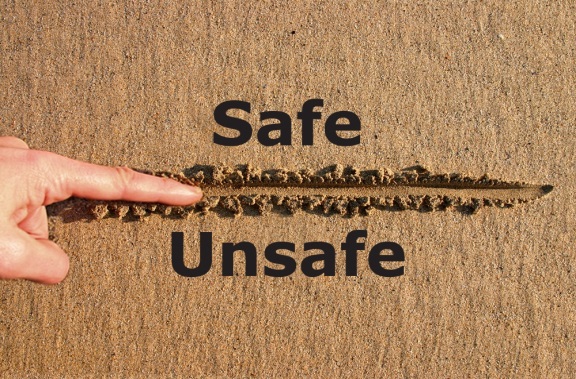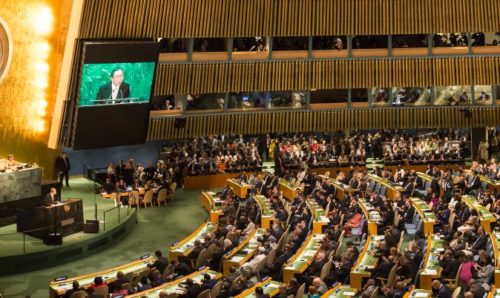It is time to abandon the concept of ‘acceptable dose’
Radiation 13th October 2015
By Adam Fuller
During the height of the Fukushima crisis back in 2011 there was a lot of discussion and fear over the effects of radiation on humans and wildlife. In an attempt to reassure the general public the Japanese and international media focused a lot on dose limits. Dose limits are the levels of radiation (above background) which radiation workers and the general public are allowed to be exposed to. They are generally measured in terms of milisieverts per year (mSv/yr). Specifically the dose limits are set at 20 mSv/yr for nuclear site workers and 1 mSv/yr for the general public1. For reference background radiation (from rocks and cosmic rays) is around 2-3 mSv/yr. Dose limits are used as a way to monitor and minimise exposure to reduce any adverse health impacts. For example in my research on radioactively contaminated land, dose limits are the reason why nuclear licensed sites, where only radiation workers are exposed, require less decontamination that unlicensed sites, which are accessible to the general public.
It is often misconstrued that receiving less than these limits has no negative health effects, often referred to as the concept of ‘acceptable dose’. This is far from the case. In fact we have a very poor understanding of the effects of low levels of radiation on the human body2 and a growing body of evidence suggests that even extremely low doses of ionising radiation may increase the risk of some cancers, just to an extremely small degree3.

I would argue that the concept that someone can receive an acceptable dose of radiation with zero adverse effect is misleading and unhelpful. Instead we should treat radiation as we do any other substance which is known to be harmful for us. For example we have known for a long time that even an extremely small amount of alcohol can still be harmful to a small degree4, but that as the amount of alcohol we consume increases so does the likelihood and severity of the health impact. Most of us however are happy to tolerate this small health risk. Perhaps if we acknowledged the very small health impact that low dose radiation can have then more of us would be willing to tolerate it for sake of the benefits that can be gained. Therefore we should not abandon the concept but rather acknowledge that with acceptable dose goes acceptable risk.
- http://www.hse.gov.uk/radiation/ionising/doses/
- http://www.nature.com/news/2011/110405/full/news.2011.206.html
- http://www.nature.com/news/researchers-pin-down-risks-of-low-dose-radiation-1.17876
- http://www.theguardian.com/science/2011/mar/07/safe-level-alcohol-consumption
Adam Fuller is a post-doctoral research associate at The University of Manchester



There are three different theorized models for radiation exposure: no threshold, threshold, and hormetic threshold. I could be wrong, but I feel like you’ve ignored all evidence for radiation hormesis (often called the ‘too much of a good thing’ model). Most substances that we intake effect us hormeticall, i.e., they have a positive effect up to a certain threshold. Take water for example; necessary for life but deadly in large doses. The overwhelming amount of evidence we (the scientific community) have indicates that radiation has a hormetic effect. So much so that France, Japan, and China all base their policies off a hormesis model (the US uses a no threshold model).
From this article (http://www.ncbi.nlm.nih.gov/pmc/articles/PMC2477686/) summarizing radiation hormesis:
“Over 3,000 scientific research papers show that low dose irradiation is stimulatory and/or beneficial in a wide variety of microbes, plants, invertebrates, and vertebrates (Luckey, 1980a, 1991, Muckerheide, 2001). Using the parameters of cancer mortality rates or mean lifespan in humans, no scientifically acceptable study was found which showed that less than 10 cGy was harmful. Radiation, Science, and Health, Inc. (Box 843, Needham, MA 02494) offers $1,000 for one report in English with scientifically acceptable evidence of harm (increased cancer death rate or decreased average lifespan) from low dose irradiation in normal (not immune deficient) humans or laboratory animals. This is opposed by several thousand studies which produced confirmed and definitive evidence of stimulation and/or benefit.”
Some benefits include
– “Low dose irradiation activates the immune system in several ways: faster wound healing, and increased resistance to toxins, infections, and tumor cell injections”
– “Data indicate that half of the patients in stage I (indolent lymphoma) are cured (with a 15 year follow-up) by radiotherapy alone. Addition of chemotherapy to radiotherapy does not indicate any improvement in overall outcome.”
– “The epic study of Cohen which showed that lung cancer deaths decreased with increased radon concentration in homes.”
– “For two decades residents [in a particular apartment complex in Taiwan] received an average of 1.5 cGy/y (the range was 0.1 to16 cGy/y), about 10 times more radiation than ambient levels in Taipei. In the first decade the cancer mortality rate of this exposed population dropped from 50 to 4 per 100,000 people while that of general population increased from 82 to 108 per 100,000.”
– “A decades long epidemiologic study in China showed peasants living with three times the levels of natural radiation are more healthy in almost every characteristic than peasants living with lower levels of radiation.”
– “Kaplan (Kaplan, 1949) successfully treated sterility in women with low dose irradiation (about 90 cGy of X rays to the ovary in three weeks). Three generations showed no adverse effects. There was no evidence of genetic damage from 351 pregnancies in 644 irradiated women, ‘… the incidence of genetic damage to the children and grandchildren of this group is less than that in the normal population.'”
– “Japanese bomb survivors exposed to low dose irradiation have statistically significantly longer average lifespan than those of control populations.”
– “When ionizing radiation is lowered below ambient levels, a wide variety of animals either do not survive, or become weak and perform poorly.”
I could go on, but I urge you to research the actual research before promoting the linear no-threshold model any further. Cheers.
At Nature News, there are well over a dozen very critical comments on that recent Lancet Haematology paper you link to above pointing out a number of oversights and worse [ Your ref 3: http://dx.doi.org/10.1016/S2352-3026(15)00094-0 ].
Take this one: “there is no significant increase in the 5-50mSv bracket at all. This also holds when we consider all deseases studied.”
— Ruediger Meyer
— http://www.nature.com/news/researchers-pin-down-risks-of-low-dose-radiation-1.17876#comment-2114014007
Explain to me again how that study is supports your conclusion “a growing body of evidence suggests that even extremely low doses of ionising radiation may increase the risk of some cancers, just to an extremely small degree”? Rather, the paper seems to flatly contradict its own claim to have found a LNT dose-response.